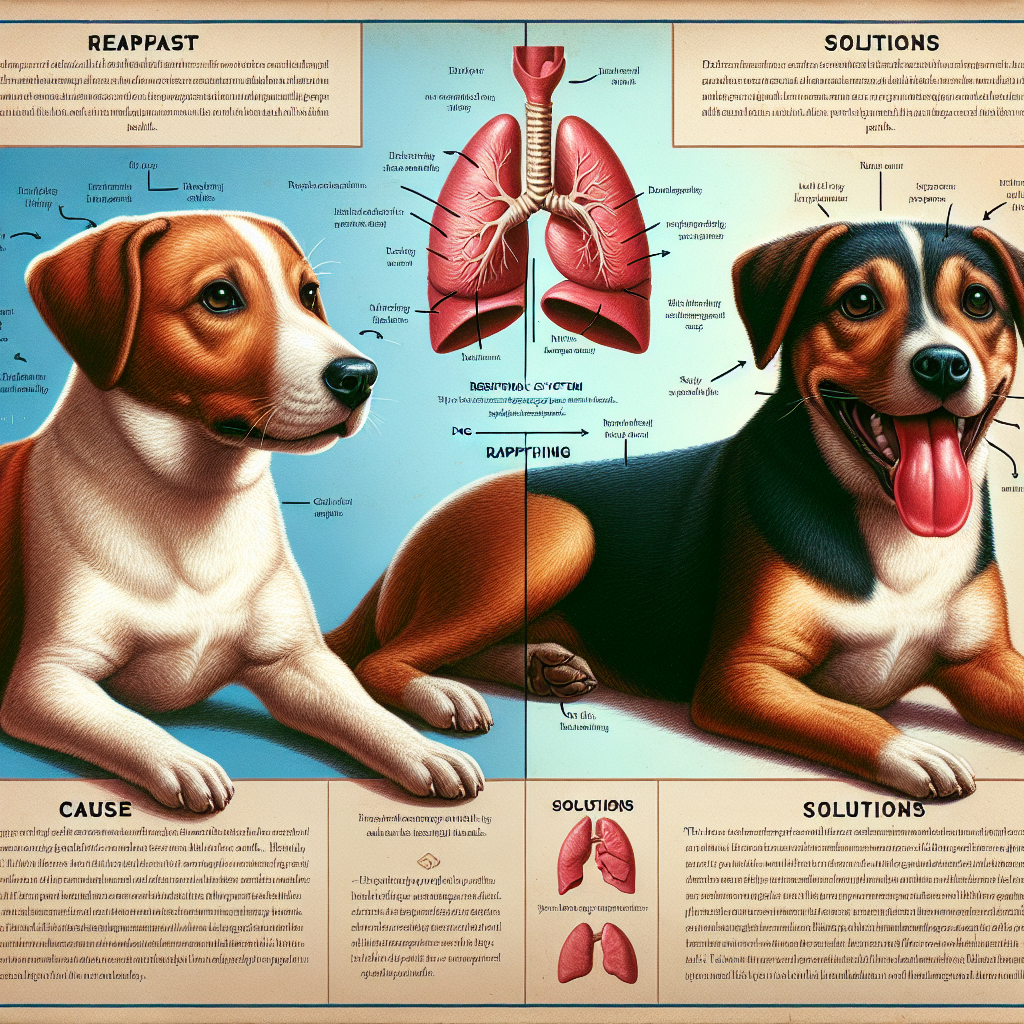Experiencing rapid breathing in dogs can be alarming for any pet owner. It often leaves you feeling helpless and anxious, wondering what’s wrong with your beloved companion. Understanding rapid breathing in dogs is crucial, as it can signify underlying health issues that require immediate attention. In this article, we will explore the causes of rapid breathing, along with effective methods to manage your dog’s respiratory difficulties. Equip yourself with the knowledge you need to ensure your furry friend’s well-being and take proactive steps toward a healthier life.
Identifying the Causes of Rapid Breathing in Dogs
Rapid breathing, or tachypnea, in dogs can stem from a variety of factors, ranging from benign to severe. One of the most common culprits is heat. Dogs do not sweat like humans; instead, they rely on panting to regulate their body temperature. When temperatures rise or during vigorous exercise, panting becomes more pronounced, which can easily be mistaken for rapid breathing. If your dog exhibits this behavior only during physical activity or in warm conditions, it may simply be a natural response to maintain thermal homeostasis.
In conditions where rapid breathing occurs at rest, the situation is more complex. Respiratory diseases, such as pneumonia or bronchitis, can lead to increased breathing rates as the dog struggles to obtain sufficient oxygen. Additionally, heart conditions, including congestive heart failure, can manifest as rapid breathing due to fluid buildup in the lungs. These serious health concerns are often accompanied by other symptoms, including coughing, lethargy, or changes in appetite, which are critical indicators that warrant immediate veterinary attention.
Anxiety and stress can also trigger rapid breathing in dogs. Situations such as thunderstorms, fireworks, or separation from their owners may induce anxiety, resulting in hyperventilation. Interestingly, some breeds—like Bulldogs and Pugs—are more prone to respiratory issues due to their anatomical structure, making it essential to recognize that not all cases of rapid breathing are linked to disease. Understanding these nuances helps in pinpointing the exact cause, allowing for targeted intervention and care.
Effective Solutions for Managing Your Dog’s Breathing Issues
Once the underlying cause of rapid breathing is identified, implementing effective management strategies becomes paramount. For dogs experiencing heat-related panting, it is imperative to keep them cool. Providing access to fresh water, shade, and a cool environment can mitigate the effects of heat and prevent overheating. When engaging in outdoor activities, schedule walks during cooler hours, and always monitor your dog’s breathing patterns—if they seem overly fatigued or stressed, it’s time to take a break.
When respiratory or heart conditions are at play, professional veterinary intervention is crucial. Veterinarians may recommend diagnostic tests, including X-rays or echocardiograms, to assess the severity of the condition. Treatment may vary from medication to dietary adjustments aimed at improving overall health. For instance, anti-inflammatory drugs can help alleviate symptoms of respiratory diseases, while specific heart medications can improve circulation and reduce fluid retention. Regular follow-ups with your veterinarian are essential for monitoring your dog’s condition and adjusting treatment as necessary.
Anxiety-driven rapid breathing can often be managed with behavioral training and environmental modifications. Techniques such as desensitization and counter-conditioning can help dogs become more accustomed to stress-inducing stimuli. For some dogs, the integration of calming supplements or anxiety wraps can significantly reduce stress levels. Additionally, creating a safe space for your dog—complete with their favorite toys and a quiet atmosphere—can greatly alleviate anxiety, contributing to more stable breathing patterns. Engaging your dog in regular, low-stress activities can also foster a sense of calm, promoting overall respiratory health.
Understanding rapid breathing in dogs is not just about recognizing symptoms; it’s about being proactive in ensuring their health and happiness. By identifying the underlying causes and implementing effective management strategies, you can take significant strides toward safeguarding your dog’s well-being. Always consult with a veterinarian when you notice changes in your dog’s breathing patterns, as early intervention can be key in addressing potential health issues. Armed with this knowledge, you are now equipped to provide the best care possible for your furry companion. Take action today and foster a supportive environment that promotes their health and happiness!
Measuring Your Dog’s Height: A Comprehensive GuideUnderstanding How Dogs Become Infested with FleasUnderstanding the Lifespan of Pug Dogs: What to ExpectRelevant LinkRelevant LinkRelevant Link
